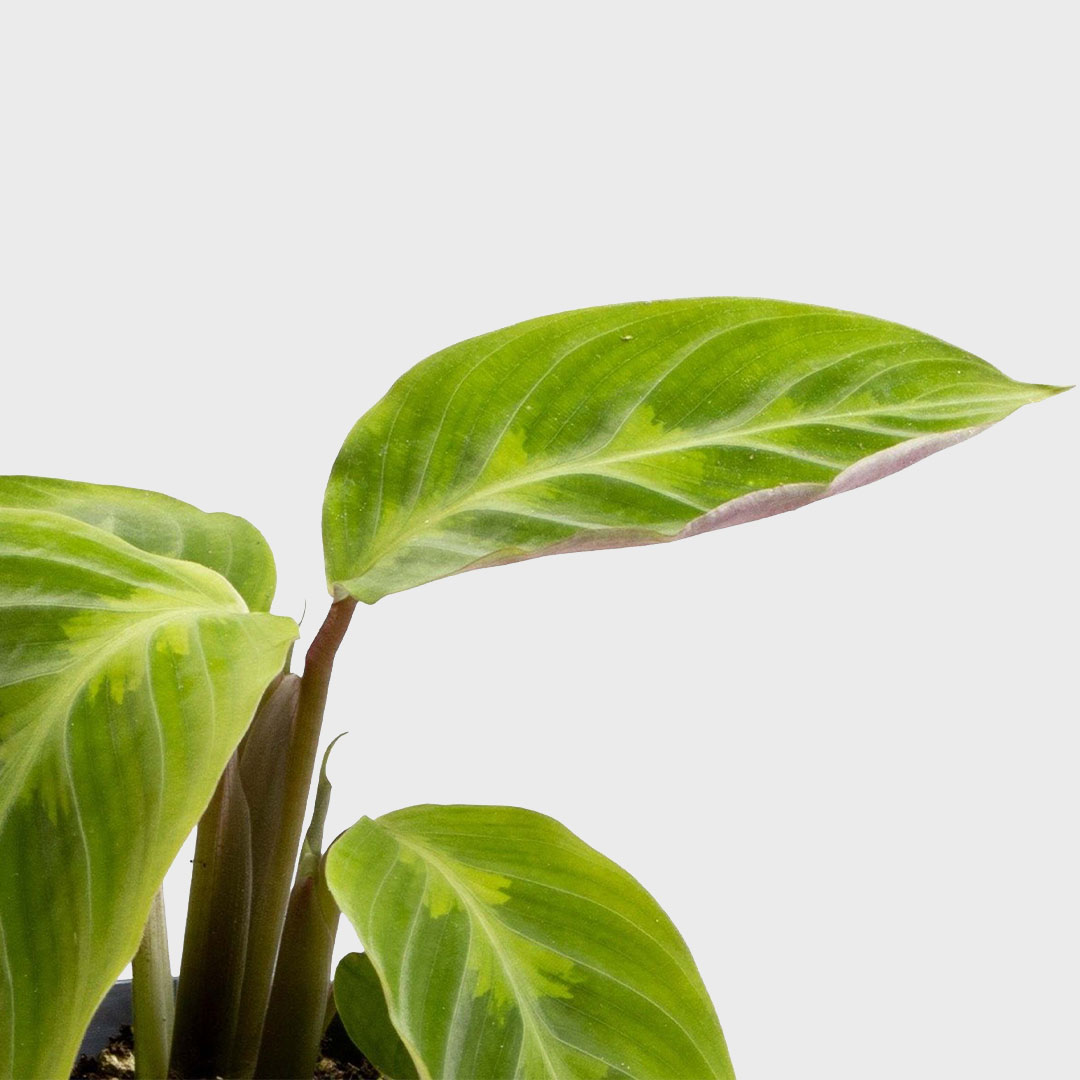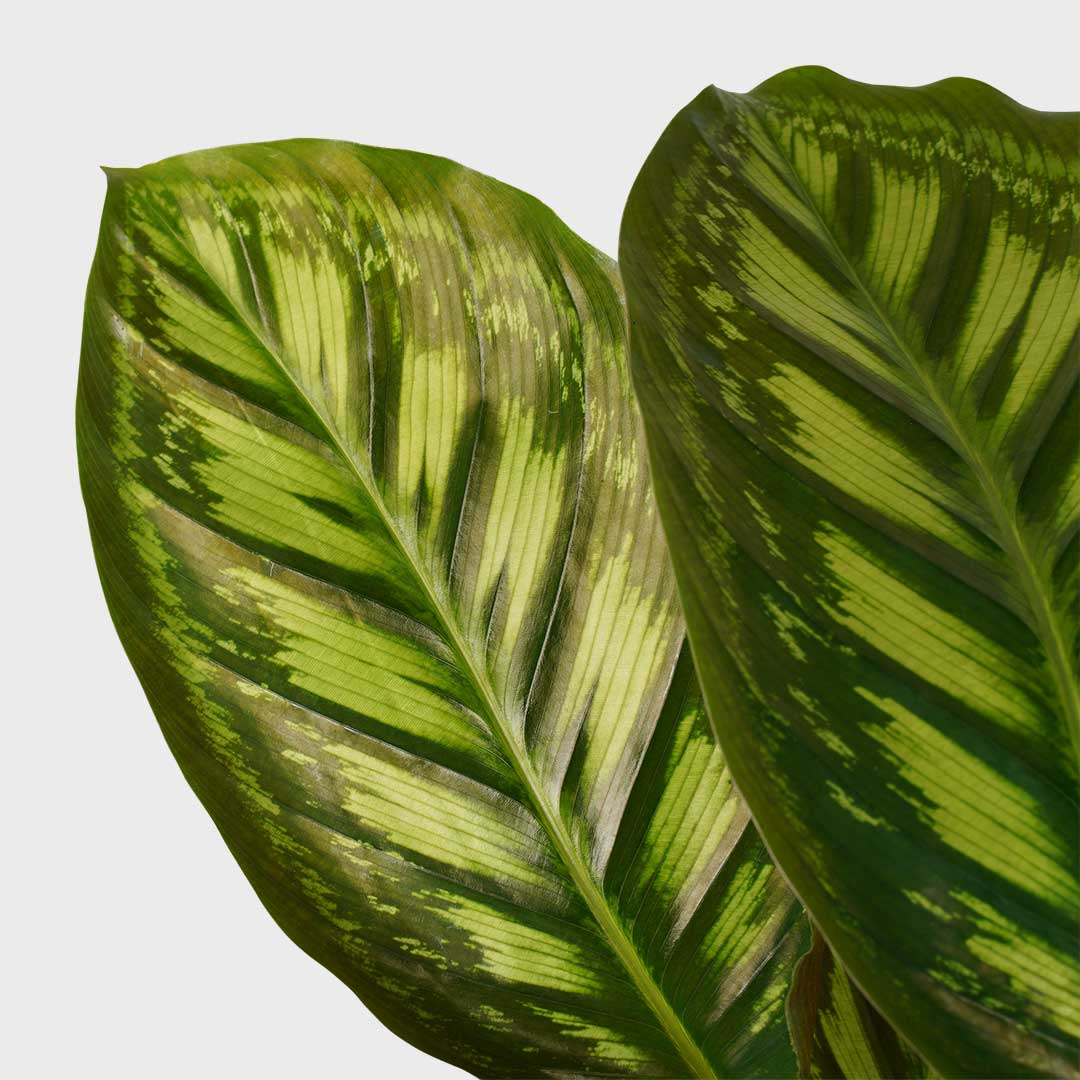
Deliver to
Austria
 English
English

The Calathea is one of the most famous indoor plants globally. You can recognize the plant by its leaves. The leaves have a rich color of green and are wide-shaped with white or purple in the middle of the leaf. The best part about the leaves is that the underside is either maroon or purple, making it an extremely aesthetic plant to have as an interior decoration.
Medium light
Water once a week
Non-Toxic
Air-purifying
As Calathea plants originate from under the trees in rainforests, a Calathea doesn't enjoy direct or bright sunlight. They prefer indirect sunlight or even partial shade as direct sunlight burns and scorches their leaves. Worst of all, direct sun will make the vibrant leaves go dull.
The Calathea consumes a lot of water. In summer it is best to add small amounts of water twice a week. From autumn to spring once a week is sufficient. It is important that the Calathea always has its soil moist. However, make sure you don't overwater the plant, as this can cause the root to rot.
Try giving Calathea plants lukewarm water instead of cold, as they're used to warmer temperatures.
Next to watering it is also important to spray a Calathea with a plant sprayer. They like high humidity. A perfect bathroom plant!
The Calathea uses a lot of energy from spring onwards to make new leaves. As a result, the plant needs extra nutrients. You can provide these nutrients by plant nutrition. We recommend giving plant nutrition once every two weeks. From spring until autumn. After autumn and in winter it is better to stop giving extra nutrients. In the autumn, plant nutrition can actually be harmful for the Calathea!
The ideal temperature for Calathea plants generally ranges between 18 to 27 degrees Celsius. It's important to avoid exposing Calathea plants to temperatures below 15 degrees Celsius as they are sensitive to cold drafts and temperature fluctuations.
Pruning is generally not required for Calathea plants as they naturally maintain their compact and bushy growth habit. If any leaves on the Calathea plant become yellow, brown, or damaged, it's advisable to prune them off. This helps maintain the plant's appearance and prevents the spread of any potential diseases.
If the air is too dry, the Calathea can suffer from spider mites. To prevent spider mites, it is best to use the plant sprayer once a week. Spider mites are an infection of mites on plants. You can recognise the infection by infected leaves and a kind of cobwebs. If you have come across spider mites, it is best to place the plant outside. Wind and moisture from outside will quickly keep the spider mite away.


The leaves of a Calathea can curl for several reasons.
The most common reason is that the air is too dry. You can increase the humidity by spraying the leaves of the plant with a plant spray.
It is also possible that the leaves are curling because the plant is not getting enough water. You can test this by sticking a finger or a toothpick into the soil.
The leaves of the Calathea usually droop when the plant doesn't get enough water. Water the plant and you will see that within a few hours the leaves will be upright again.
If the Calathea gets too much light the leaves may develop brown edges. It is also possible that these brown edges are caused by a location with a lot of draught.
Yes, you certainly can. Check out our tips on how to propagate the Calathea.